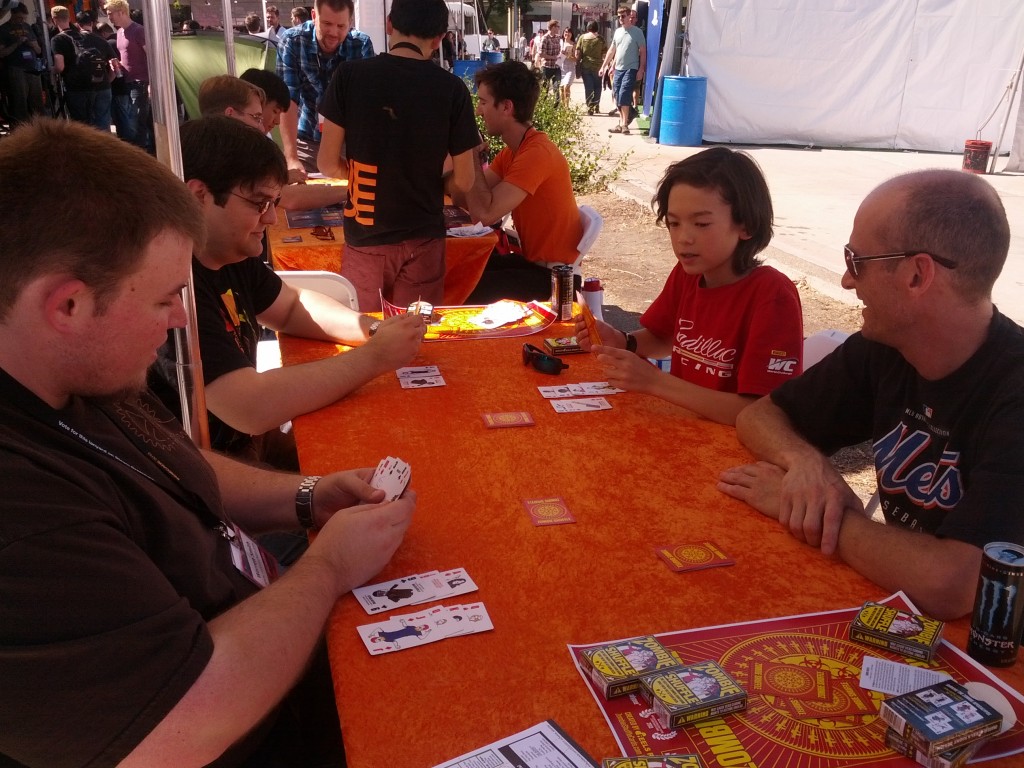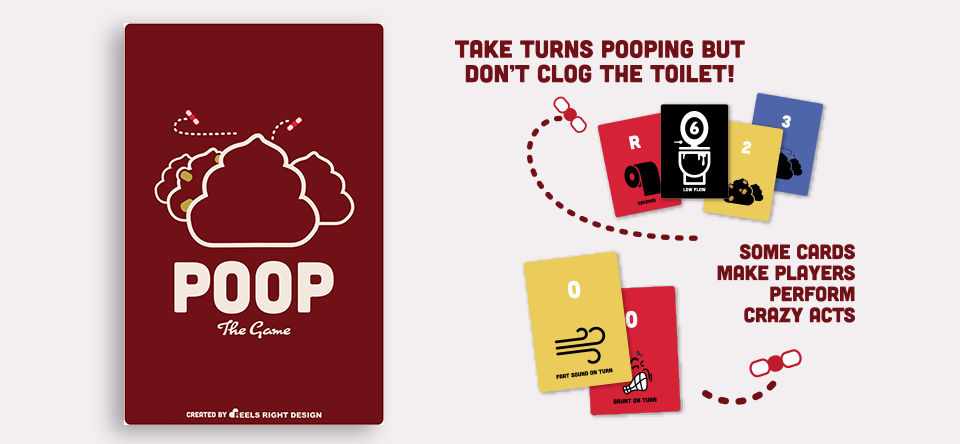Games are all around us, just waiting to be played. Children seem to understand this, plucking games out of the air. My son creates a game every night where we race to see who’ll be the first to finish dinner. From absolutely nothing kids can turn anything into a game and don’t need props, boardgames, or encouragement but play merely by their imagination. Somewhere along the road to adulthood we lose this playfulness and probably trade it in for something far too serious. We are hardened and it’s nothing short of depressing.
In improv comedy you spend weeks simply shedding your adult layers and emerge again with this sense of playfulness. You’re often asked ‘what is the game of this scene?’ because all of the best sketches have gameplay. Think about your favorite Whose Line Is It Anyway? or SNL sketch and you’ll see the game of the scene now that I’ve mentioned it.
Where do we find the initial spark and inspiration for game-making and how do we see the games in our life? Playing existing games on a tabletop or a computer is an excellent start and can be hugely inspiring if you pay attention to the mechanisms that make it fun. However, you’re limited to only the games you have played and their specific dynamics, insulated from what your own imagination can invent.
So begin by thinking of your everyday life as a game. Seriously, find that headspace and put yourself as a player in this game. All the world’s a game and we are merely players.
Next time you’re waiting in line at the bank, examine the dynamism of that monotonous situation. What is the object of the Bank Line game? All the players are waiting to get to a finite amount of bank tellers and get out as quickly as possible. The rules exist: stand in line, have the proper paperwork, don’t lose your place in the que.
So that stuff is obvious but where is the game and where is the fun? A more careful examination will bring this out so you’ll have to look at everything with soft eyes. We all quickly assess the lines and make a lightning-fast decision of which one will be shorter based on specific principles and biases. We do it all within our head utilizing our imagination of how things will play out:
“Oh, there’s an older person in that line. That’ll cost that line at least several minutes because they tend to be slower.”
“That guy looks nervous and is holding a pile of paperwork. He’s here for something far more complicated than a simple check deposit. Avoid that line.”
“This bank teller is dealing with his or her line of customers and the drive-thru teller window. That’ll make things very long.”
In a manner of seconds we’ve glanced and done this in our head but this is actually a tiny game playing out if we pay attention to it. This is also happening with the most boring set of circumstances possible. Imagine the games you’ll create titled High School Reunion or Dinner at The In-Laws or Church: The Game! It is then your task to take these factors, heighten them, pick the best way to express them, and make it fun.
Is our Banking Line game a classic BurgerTime arcade game or could we turn it into a card game with hilarious character cards like Guess Who? Maybe it is a boardgame with miniatures? Or can we take what’s happening in the Banking Line game and apply it to something else completely? It sounds cliche but the possibilities are literally endless using this method.
When creating a game there are two ways to start: 1) Pick the theme or flavor of the game and then figure out the mechanics that match. 2) Figure out the mechanics (i.e. trick-taking cards, first-person shooter) and then overlay a theme. When we created POOP: The Game, and when creating all our games, we like the former of the two. We knew we wanted a game about poop so then we asked what are the mechanics of pooping and how would this work as a group party game?
We’ve all clogged the toilet before and it’s awful so we wanted to include that mechanism and wanted it to negatively impact your gameplay. Flushing is also an extremely important aspect of pooping. So now we’re looking at the basics and create objectives that reflect real-life:
• Get rid of all your poop
• Do it without clogging the toilet
• Toilets can remain unclogged by flushing
Now you’ve got a game! The struggle going forward is finding balance, test-playing it over and over, and consider feedback while maintaining the original intent of the game. This phase of game-making should be focused on making it as fun and simple as possible. Your experience playing other people’s games will help you drastically during this time.
While there are many game development theories and game-making schools, these are the principles we’ve used in life and in our games. Be more playful and you’ll find yourself seeing the games around you.
—
Blaise Sewell is a game developer and graphic designer at Feels Right Design. We create campaigns for non-profit organizations like Amnesty International, CODEPINK, Project Sakinah, and NORML. Our mission is to design delightful political images for groups with a limited marketing budget and we make our work affordable through sales of our games!






